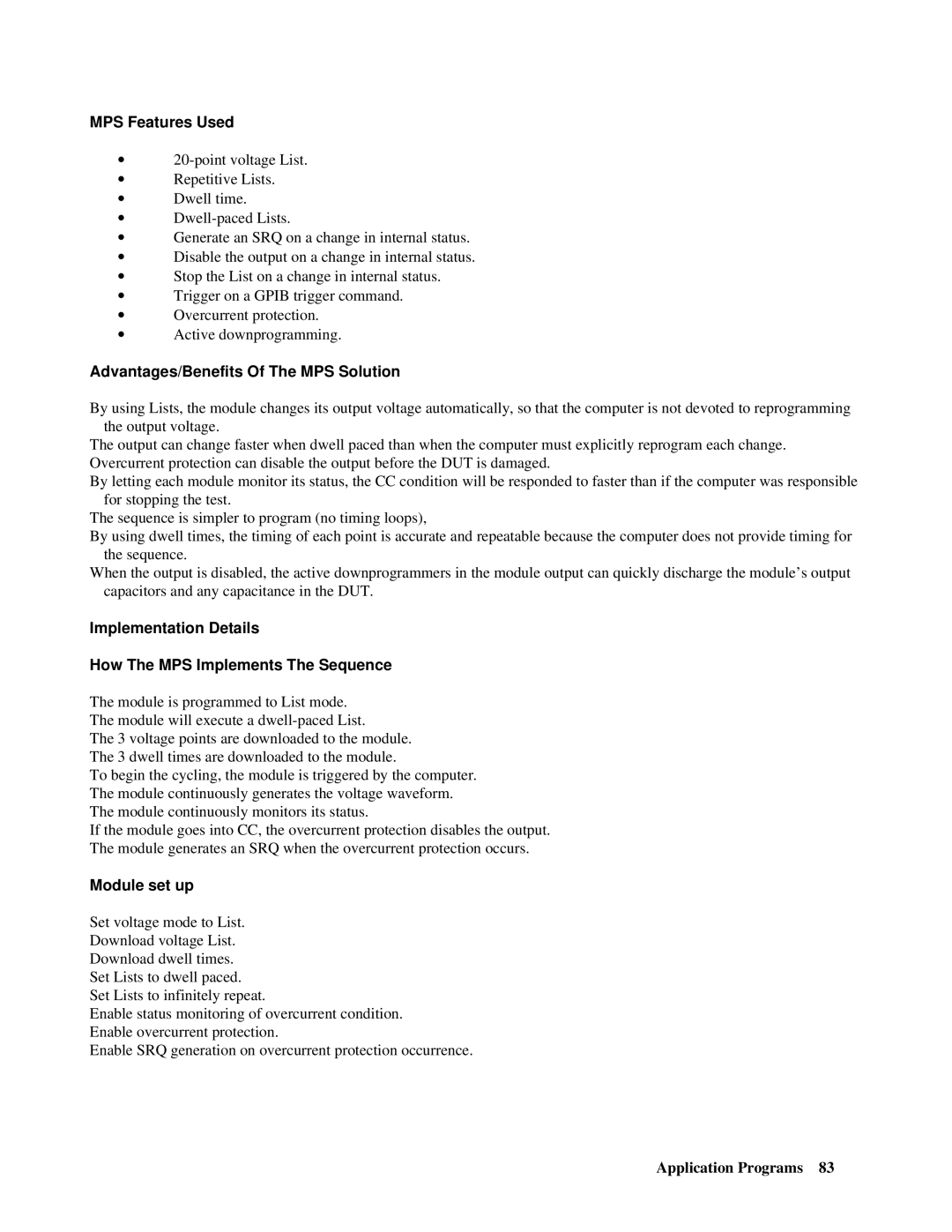MPS Features Used
∙
∙Repetitive Lists.
∙Dwell time.
∙
∙Generate an SRQ on a change in internal status.
∙Disable the output on a change in internal status.
∙Stop the List on a change in internal status.
∙Trigger on a GPIB trigger command.
∙Overcurrent protection.
∙Active downprogramming.
Advantages/Benefits Of The MPS Solution
By using Lists, the module changes its output voltage automatically, so that the computer is not devoted to reprogramming the output voltage.
The output can change faster when dwell paced than when the computer must explicitly reprogram each change. Overcurrent protection can disable the output before the DUT is damaged.
By letting each module monitor its status, the CC condition will be responded to faster than if the computer was responsible for stopping the test.
The sequence is simpler to program (no timing loops),
By using dwell times, the timing of each point is accurate and repeatable because the computer does not provide timing for the sequence.
When the output is disabled, the active downprogrammers in the module output can quickly discharge the module’s output capacitors and any capacitance in the DUT.
Implementation Details
How The MPS Implements The Sequence
The module is programmed to List mode.
The module will execute a
The 3 voltage points are downloaded to the module.
The 3 dwell times are downloaded to the module.
To begin the cycling, the module is triggered by the computer.
The module continuously generates the voltage waveform.
The module continuously monitors its status.
If the module goes into CC, the overcurrent protection disables the output.
The module generates an SRQ when the overcurrent protection occurs.
Module set up
Set voltage mode to List.
Download voltage List.
Download dwell times.
Set Lists to dwell paced.
Set Lists to infinitely repeat.
Enable status monitoring of overcurrent condition.
Enable overcurrent protection.
Enable SRQ generation on overcurrent protection occurrence.
Application Programs 83
